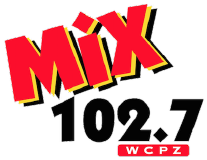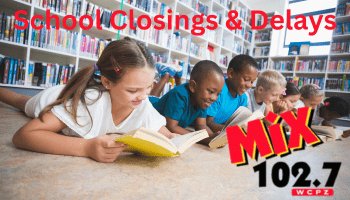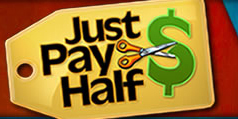The National Hockey League uses a lottery system to determine which team receives the first overall pick in June’s entry draft. Here’s how the process works, how we ended up with it, who’s involved in the drawing and when the winner of the No. 1 pick is revealed.
When is the 2019 NHL draft lottery?
The lottery is scheduled for April 9 at the Canadian Broadcasting Company building in downtown Toronto. The televised show that reveals the picks begins at 8 p.m. ET, about one hour after the actual drawing.
Why was the draft lottery moved up this year?
Last season, the lottery was held on April 28, and it has traditionally been held during the playoffs. This season, it’s scheduled for three days after the end of the regular season.
“Every year, we have discussions with our broadcast partners about what works best for scheduling the draft lottery,” NHL senior vice president John Dellapina said. “It just feels like it’s gotten wedged into the playoffs for the last couple of years. We were thinking if we did it before the playoffs, it would have its own night.”
Does it involve actual lottery balls?
Yes. Although it might seem easier to have a computer spit out random numbers, the NHL utilizes the same kind of lottery machine used for multimillion-dollar drawings, with actual lottery balls. Apologies to those who prefer games such as video roulette.
Who picks the lottery balls?
NHL commissioner Gary Bettman because they can’t boo him.
Who participates in the draft lottery?
The 15 teams that didn’t qualify for the Stanley Cup playoffs.
Which prospect is the big lottery prize this season?
There are two, actually. There’s Jack Hughes, an 18-year-old from the U.S. national development team who is an explosive skater but has some observers concerned about his size for a center (listed at 5-foot-10 and 168 pounds). Then there’s Kaapo Kakko, a 6-foot-2 winger who has dominated Finland’s top pro league this season. (See ESPN’s latest draft board update here.)
Which one has the better hashtag?
Without question #LoseForHughes. Sadly, #KrapOutForKakko never caught on.
Why does the NHL have a draft lottery?
Bettman was with the NBA when the Association began using a draft lottery in 1985. (Conveniently, this was when the New York Knicks were third-worst overall but ended up with Patrick Ewing at No. 1 … but that’s a “frozen envelope” conspiracy theory for another day.) Bettman liked the lottery as a mechanism to discourage tanking, and the NHL began using it in 1995.
How has it evolved?
From 1995 to 2012 (save for 2005), the NHL lottery determined the top pick in the draft with a system that gave weighted odds to the worst overall teams. All non-playoff teams were eligible to win it, but there was a catch: A team could not move up more than four spots from its end-of-season ranking, and no team could drop more than one spot. Hence, only the five worst teams in a given season had a shot at No. 1 overall, and the worst team could do no worse than the second overall pick.
There were seven draft lotteries during this span in which a team that didn’t have the worst record moved up to No. 1. That’s how Atlanta drafted Ilya Kovalchuk and Chicago drafted Patrick Kane.
And how Edmonton won the Nail Yakupov derby?
Hey, some weeks the Powerball jackpot is worth a billion dollars, and other weeks you don’t even quit your job if you win. Same thing applies here.
What happened in 2005?
The exception in this era was the 2005 NHL draft after the season-cancelling lockout. With Sidney Crosby as the prize, all 30 teams were eligible to win the first overall pick. Pittsburgh was one of four teams that had the maximum three balls in the 48-ball bin, and it won a lottery that changed the fortunes of the franchise on and off the ice.
That came after the Penguins lost the 2004 lottery despite having the best odds, and Washington drafted Alex Ovechkin. (Chicago owner Bill Wirtz’s famous reaction to the Penguins’ win: “Justice.”)
What’s the current format?
In 2013, the rules were changed to allow every team that missed the playoffs a chance at the first overall pick. In 2016, the rules were dramatically changed again in an effort to subvert a recent trend of alleged tanking, giving us the current format.
There are actually three separate drawings. The first lottery draw determines the club selecting first overall, and the second draw and the third draw determine the other top picks. The 12 teams that don’t win those lotteries are then slotted by their records.
If the worst team in the league doesn’t win the No. 1 pick, it remains an odds-on favorite to win either of the next two, but there’s a chance that it could tumble all the way to fourth overall. The NHL sold this format as a byproduct of its parity, saying there wasn’t much difference between the “worst team” statistically and the rest of the non-playoff clubs.
How does this differ from the NBA’s draft lottery?
Like in the NBA, the NHL draft lottery assigns a sequence of numbers to each team and holds a drawing of multiple lottery balls to establish that number. But unlike in the NHL, the NBA draft lottery conducts drawings for its top four picks, which means the worst overall team could end up picking fifth in the draft. The NBA also levels the odds of the worst three regular-season teams at 14 percent and the fourth-worst team at 12.5 percent. The NHL has a steeper probability scale: The worst overall team is at 18.5 percent, the second-worst at 13.5 percent and the third-worst at 11.5 percent.
Why are the NBA’s lottery rules so much more draconian than the NHL’s?
Because basketball fans are convinced that the league tinkered with the lottery to benefit teams such as the Lakers and Sixers, while the existence of Connor McDavid on the Edmonton Oilers is all the evidence you need that the NHL is either unable or unwilling to rig its draft lottery.
Which NHL team has won the draft lottery the most?
The Oilers have received four No. 1 picks in the lottery era, although they’ve technically “won” the lottery only three times (2010, 2012 and 2015). In 2011, the Devils won it, but the rules (see above) prevented them from moving up more than four spots, so they went from eighth to fourth, while the Oilers got the top pick. With their No. 4 pick, the Devils selected defenseman Adam Larsson (now a member of the Oilers, ironically).
The other team that won the lottery three times? The Florida Panthers. But the Panthers traded the first overall pick in 2002 (to Columbus, who selected Rick Nash) and in 2003 (to Pittsburgh, who selected Marc-Andre Fleury) while keeping their 2014 pick to draft defenseman Aaron Ekblad.
Who comes up with the lottery odds?
The NHL’s hockey operations department determines the percentage probabilities. Lest one believe they’re using a NASA supercomputer to do so, in reality these are numbers selected arbitrarily to give the weakest teams an advantage in the lottery but not an overwhelming one that could encourage tanking. It’s likely that they’ll continue to fiddle with the odds in the future.
Remember that 2015 NHL draft lottery with McDavid as the prize? The NHL board of governors approved a “compression of odds” to subvert tanking campaigns. (In the end, the Oilers won the lottery over two tanking teams simply by being inept.)
How are teams assigned their lottery numbers?
While it would be amazing if it involved NHL general managers coloring in circles with a pencil and handing the sheet to a convenience store cashier, it isn’t that kind of lottery. Four-digit combinations are randomly generated by computers and then randomly assigned to the non-playoff teams by the Bortz Sports and Media Group once the regular-season standings are final.
How is the drawing conducted?
There are 14 lottery balls, numbered 1 through 14. They’re kept in a sealed case, so unless there’s an “Ocean’s Thirteen”-like scheme in which they’re tampered with at the factory, their integrity is intact. The balls are loaded 1-through-14 into the machine by a different lottery technician each year, with representatives from Ernst and Young as well as Bettman looking on. Once the balls are loaded, the machine is switched on by the technician. NHL executive VP of events Dean Matsuzaki, with his back turned to the machine, calls for a draw of each of four balls at 15-second intervals, with Bettman making the draw.
When the winner of the first drawing is verified, the four balls drawn are released back into the machine. The same procedure follows for the second and third drawings. Since a team can’t win more than one drawing, a redraw is conducted after a repeat winner.
For example: According to the NHL, the Buffalo Sabres “won” the draft lottery twice in 2018. One of their number sequences came up on the first drawing, earning them the right to select defenseman Rasmus Dahlin with the No. 1 pick. Another one of their number sequences was selected in the third drawing, but since they already owned the first overall pick, the drawing was held a second time. The Montreal Canadiens owned the next number sequence available, leapfrogging the Ottawa Senators for the third overall pick.
Scott Clarke and Lionel Coutinho of Ernst and Young verify the four numbers that emerge from the machine for each of the three draws and look up the combination to verify the winner. There are charts that list the numbers by team and by numerical combination, and they’re available to anyone who is sequestered in the lottery room.
Who’s in the room where the lottery happens?
Like Aaron Burr (sir), you want to be in the room where it happens. But only a select few can be there for the drawing.
Along with Bettman, Bettman’s assistant, Matsuzaki, the Ernst and Young bean-counters and the lottery technician, team representatives (not the ones who will be onstage but other affiliated observers) and one member of the media are invited to watch the lottery. They have to surrender their phones and any other communication devices to a member of NHL security before entering the room. They remain in the room after the drawing to watch the results revealed on television. (Don’t worry, it doesn’t get post-apocalyptic: There is both ample catering and a bathroom.)
The entire lottery room process is recorded and posted on NHL.com after the results are revealed, for transparency’s sake.
Does anyone outside the room know who won the lottery?
Nope.
Not even Bill Daly, the NHL deputy commissioner who holds up those placards on TV?
Does this look like a man who knew which team won the McDavid lottery?
Here’s Bill Daly announcing the Oilers as winners of the NHL Draft Lottery. pic.twitter.com/LFufwCWQKj – Clay Imoo (@CanuckClay) April 19, 2015
Here’s how it works: Clarke and Coutinho assign teams to the appropriate cards, numbered 15 through 1, with the assistance of Bettman and Matsuzaki. When the live broadcast begins, a floor manager knocks on the door of the sequestered room. Clarke makes a 30-second walk from that room to the broadcast studio with the cards and hands them to Daly on the air. Daly has no idea who won. Neither do the team representatives seated in the broadcast studio.
Can teams send anybody to represent them at the NHL draft lottery?
Dellapina said that generally, anyone who has an association with the team would get NHL approval to be on the broadcast.
“We’d love to have all the general managers there, but we also understand why some of them don’t want to be associated with losing,” he said.
Wait, anyone associated with a team?
That’s what he said.
So … could a mascot represent its team at the draft lottery?
You’re asking about Gritty, aren’t you?
Maybe.
Last year, Vancouver Canucks GM Jim Benning claimed that the NHL denied his mascot, Fin the Whale, the chance to represent the team. The NHL sought to diffuse this raging controversy by telling Sportsnet that the Canucks never formally applied to have their mascot at the lottery.
OK, let’s just get to it: Is Gritty going to represent the Flyers if they’re in the draft lottery?
While visions of Gritty’s googly-eyed disappointment in losing the lottery or shooting whipped-cream cannons into the air in celebration of a win are no doubt tantalizing, the NHL told ESPN that, alas, there is a “no mascot” edict:
“Given how much is riding on a draft lottery — and given the fact that one of the primary roles of a club representative attending the lottery is to conduct media interviews — the league does not consider it appropriate for a mascot to be representing one of the clubs involved.”
 Mix 102.7 WCPZ Mix 102.7
Mix 102.7 WCPZ Mix 102.7


